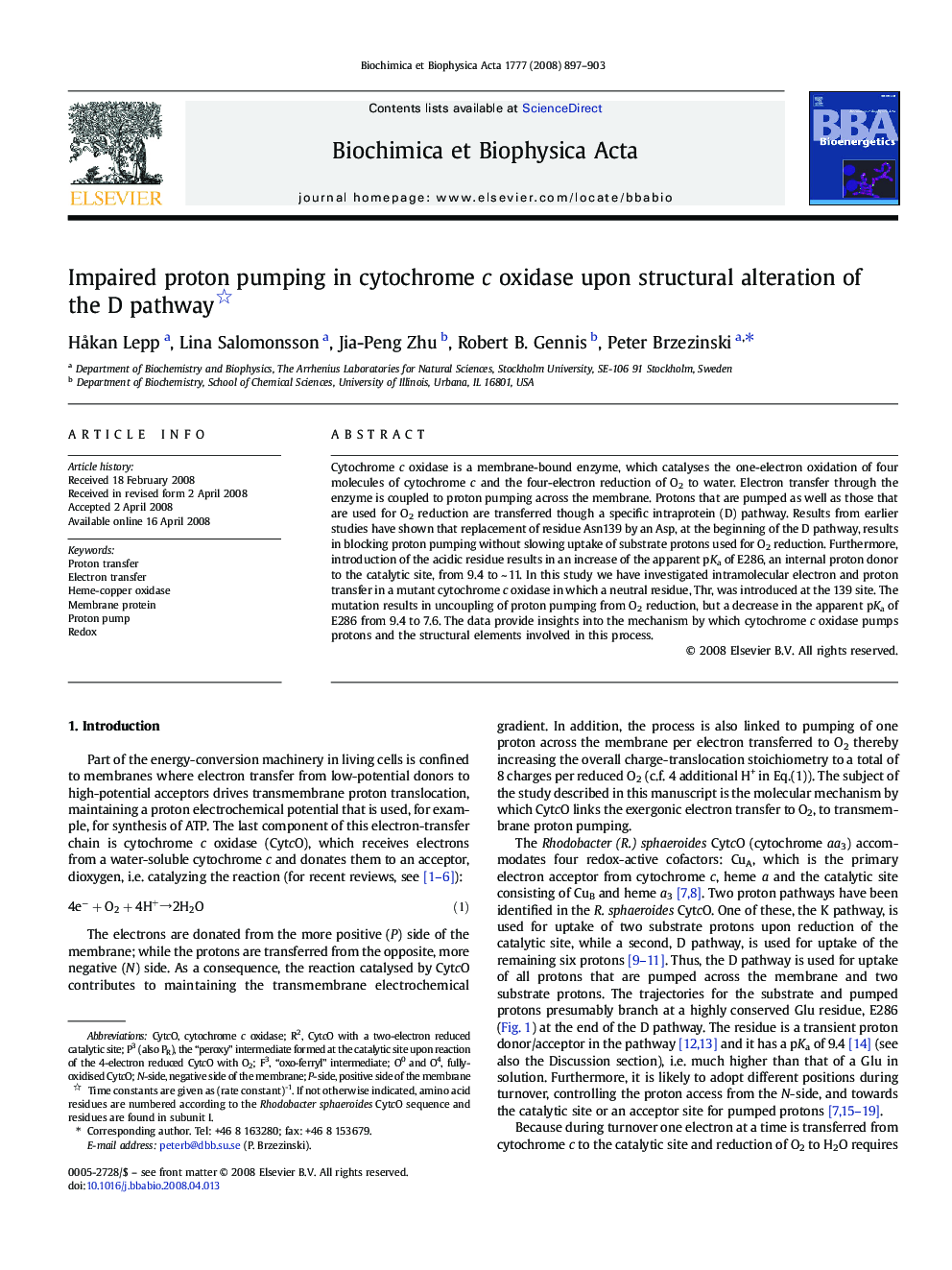| Article ID | Journal | Published Year | Pages | File Type |
|---|---|---|---|---|
| 8299196 | Biochimica et Biophysica Acta (BBA) - Bioenergetics | 2008 | 7 Pages |
Abstract
Cytochrome c oxidase is a membrane-bound enzyme, which catalyses the one-electron oxidation of four molecules of cytochrome c and the four-electron reduction of O2 to water. Electron transfer through the enzyme is coupled to proton pumping across the membrane. Protons that are pumped as well as those that are used for O2 reduction are transferred though a specific intraprotein (D) pathway. Results from earlier studies have shown that replacement of residue Asn139 by an Asp, at the beginning of the D pathway, results in blocking proton pumping without slowing uptake of substrate protons used for O2 reduction. Furthermore, introduction of the acidic residue results in an increase of the apparent pKa of E286, an internal proton donor to the catalytic site, from 9.4 to ~Â 11. In this study we have investigated intramolecular electron and proton transfer in a mutant cytochrome c oxidase in which a neutral residue, Thr, was introduced at the 139 site. The mutation results in uncoupling of proton pumping from O2 reduction, but a decrease in the apparent pKa of E286 from 9.4 to 7.6. The data provide insights into the mechanism by which cytochrome c oxidase pumps protons and the structural elements involved in this process.
Keywords
Related Topics
Life Sciences
Agricultural and Biological Sciences
Plant Science
Authors
HÃ¥kan Lepp, Lina Salomonsson, Jia-Peng Zhu, Robert B. Gennis, Peter Brzezinski,
